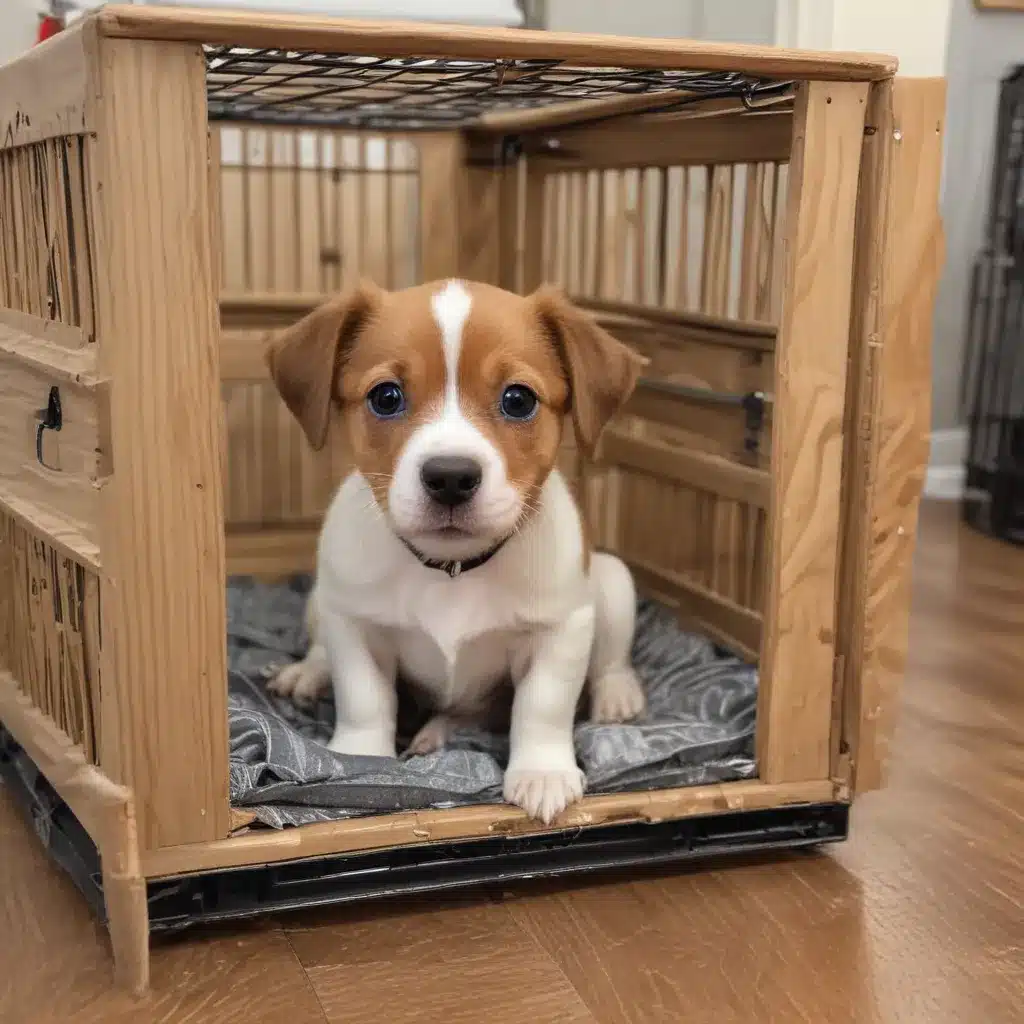
The Crate: Friend or Foe?
I’ll never forget my recent conversation with a new dog owner, let’s call her Sarah. She had just adopted a young pup from the shelter and was eager to do everything right. But when I suggested crate training, she recoiled. “I hate to crate him while I’m at work all day. I don’t want him to be confined like that or feel like he’s being punished,” she said.
I get it, the crate can seem like a bit of a conundrum. On one hand, it’s an invaluable tool for housetraining, preventing destructive behaviors, and managing separation anxiety. But on the other, it’s easy to see how it could be misconstrued as a form of punishment. After all, who wants to lock their beloved pup in a cage all day?
Well, my friends, I’m here to tell you that crate training, when done right, is anything but a punishment. In fact, it can be a pup’s safe haven – a cozy den they’ll happily retreat to on their own. It just takes a bit of patience and the right approach. And trust me, it’s well worth the effort.
Crate Training 101
Let’s start with the basics. The crate should be large enough for your pup to stand up, turn around, and lie down comfortably. Any bigger, and they may be tempted to use one corner as a bathroom. The goal is to create a den-like space, not a luxury suite.
Now, the two key principles of successful crate training are gradual exposure and positive associations. Neither of these is a walk in the park, but they’re essential for turning that crate into a beloved retreat, not a prison cell.
Gradual Exposure
Remember Sarah, the new dog owner I mentioned earlier? She made the classic mistake of just tossing her pup in the crate and expecting him to be cool with it. Needless to say, that didn’t go well.
Instead, you want to start with short, positive crate sessions – think 5 minutes at a time. Provide your pup with a delicious chew toy or treat-filled puzzle, and sit right next to the crate. This way, they associate the crate with good things, not isolation.
Gradually, you can increase the duration of these sessions, moving a bit further away each time. The key is to go at your pup’s pace, never pushing them past their comfort level. Before you know it, they’ll be happily hanging out in their cozy den for hours at a time.
Positive Associations
Now, let’s talk about that treat-filled puzzle I mentioned. This is the secret sauce of crate training. By providing your pup with something super yummy and engaging every time they’re in the crate, you’re creating a Pavlovian response. They’ll start to see the crate as a source of delicious rewards, not a place of punishment.
You can take this a step further by feeding your pup’s meals in the crate with the door open. That way, they learn to associate the crate with the best things in life – food and comfort.
Crate Training for the Rescue Pup
Okay, so what if you’ve got an adult dog, perhaps a rescue, who’s never been crate trained? Don’t worry, it’s not too late! You just need to be a bit more strategic.
I once worked with a client named Anita who had this exact problem. Her dog, Maxwell, had been crate trained when she adopted him years ago, but had since become a bed-hogging, crate-hating heathen.
Anita was worried she’d have to board Maxwell during an upcoming vacation, but I convinced her to give crate training another shot. The key, I told her, was to go back to basics and rebuild those positive associations.
We started by placing the crate in a quiet, familiar spot and leaving the door open. Anita would feed Maxwell’s meals right next to the crate, gradually moving the bowl closer and closer until it was inside. She also started leaving tasty chews and puzzle toys in the crate, so Maxwell would learn to seek it out.
After a couple of weeks of this gradual approach, Anita reported that Maxwell was happily spending time in his crate, even napping there on his own. When it came time for the vacation, he hopped right in without a fuss. Mission accomplished!
The Benefits of Crate Training
Okay, I’ve convinced you that crate training isn’t the big, bad wolf. But why is it so important in the first place? Well, my friends, let me count the ways:
-
Housetraining: Puppies and untrained dogs have a natural tendency to keep their sleeping area clean. The crate takes advantage of this instinct, preventing accidents and speeding up the housetraining process.
-
Preventing Destruction: Curious pups have a knack for chewing, digging, and generally wreaking havoc when left unsupervised. The crate keeps them safely contained and your home intact.
-
Managing Separation Anxiety: Some dogs struggle when their beloved humans leave. The crate provides a sense of security and can help ease those anxious feelings.
-
Safe Travel: Whether you’re hitting the road or the skies, a well-trained crate pup is a must. They’ll be calm, comfortable, and safe during the journey.
-
A Cozy Retreat: As I mentioned, a properly introduced crate can become a pup’s personal sanctuary. They’ll willingly retreat there for naps, quiet time, or just to get away from the hustle and bustle.
So, there you have it, folks. Crate training may take some time and effort, but the payoff is well worth it. Your pup will be happier, healthier, and better-behaved – what more could you ask for?
Now, if you’ll excuse me, I’ve got a dog adoption event to prepare for. Gotta make sure those future furry friends are ready for their crate training journey!

